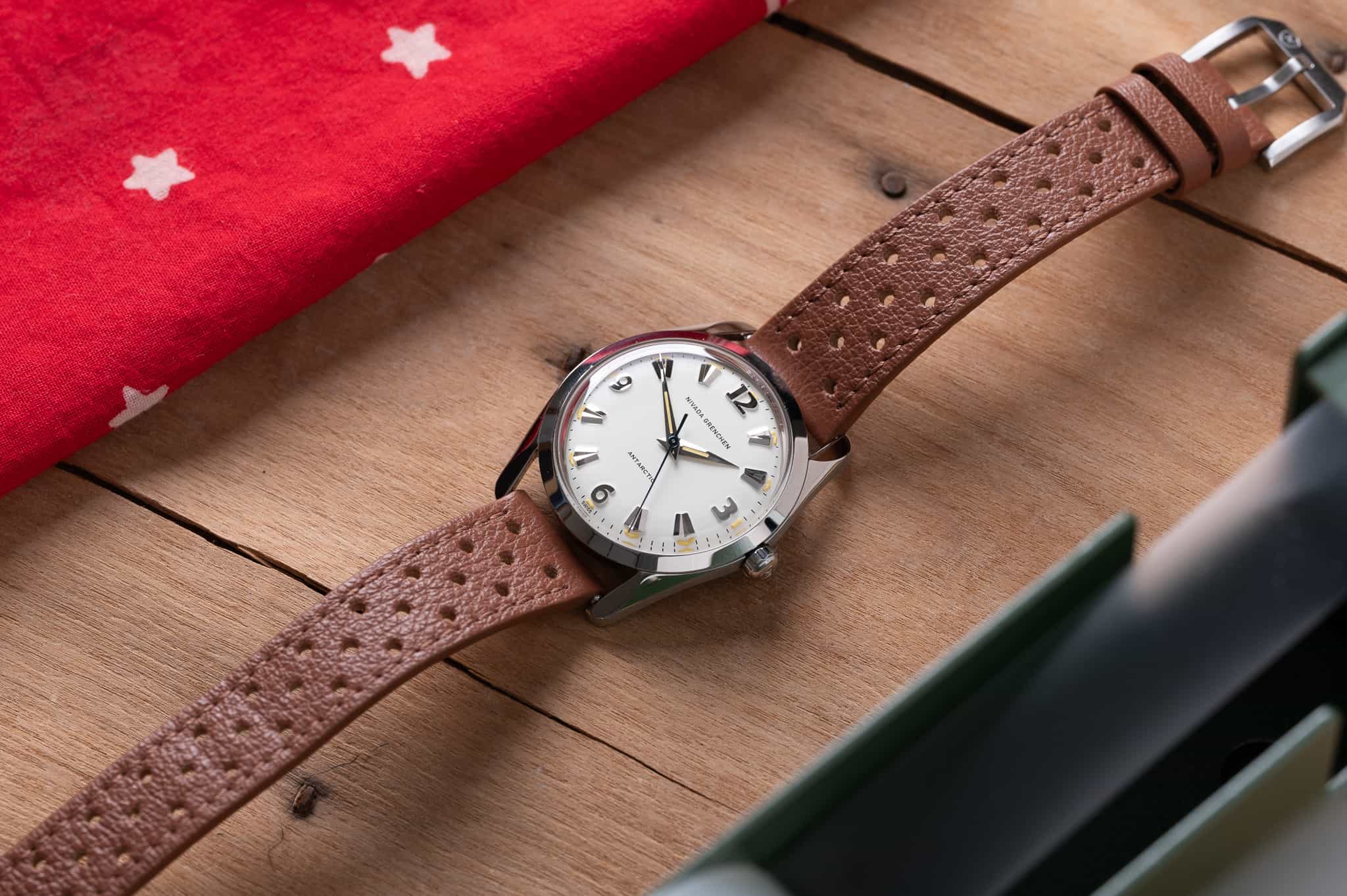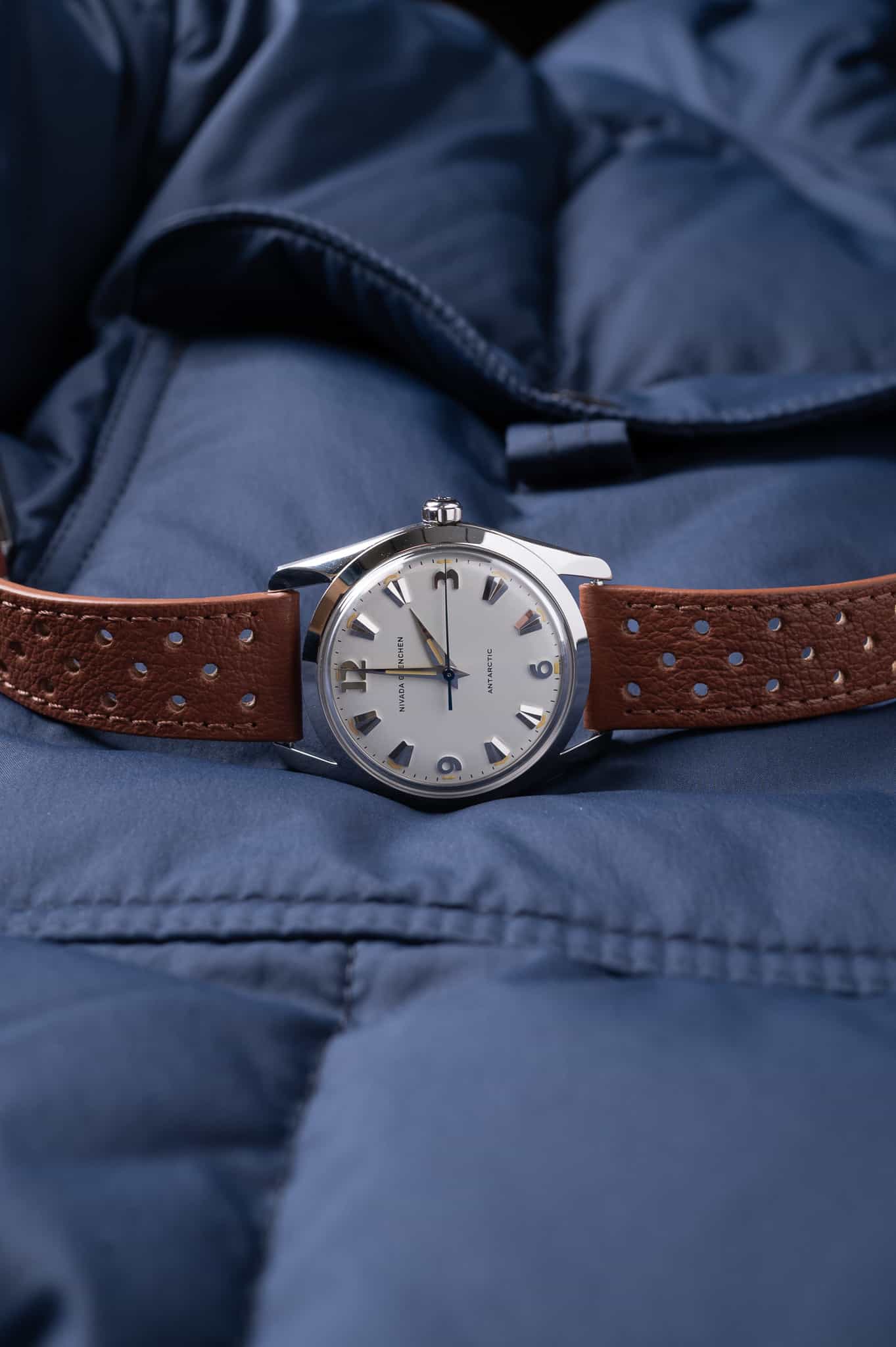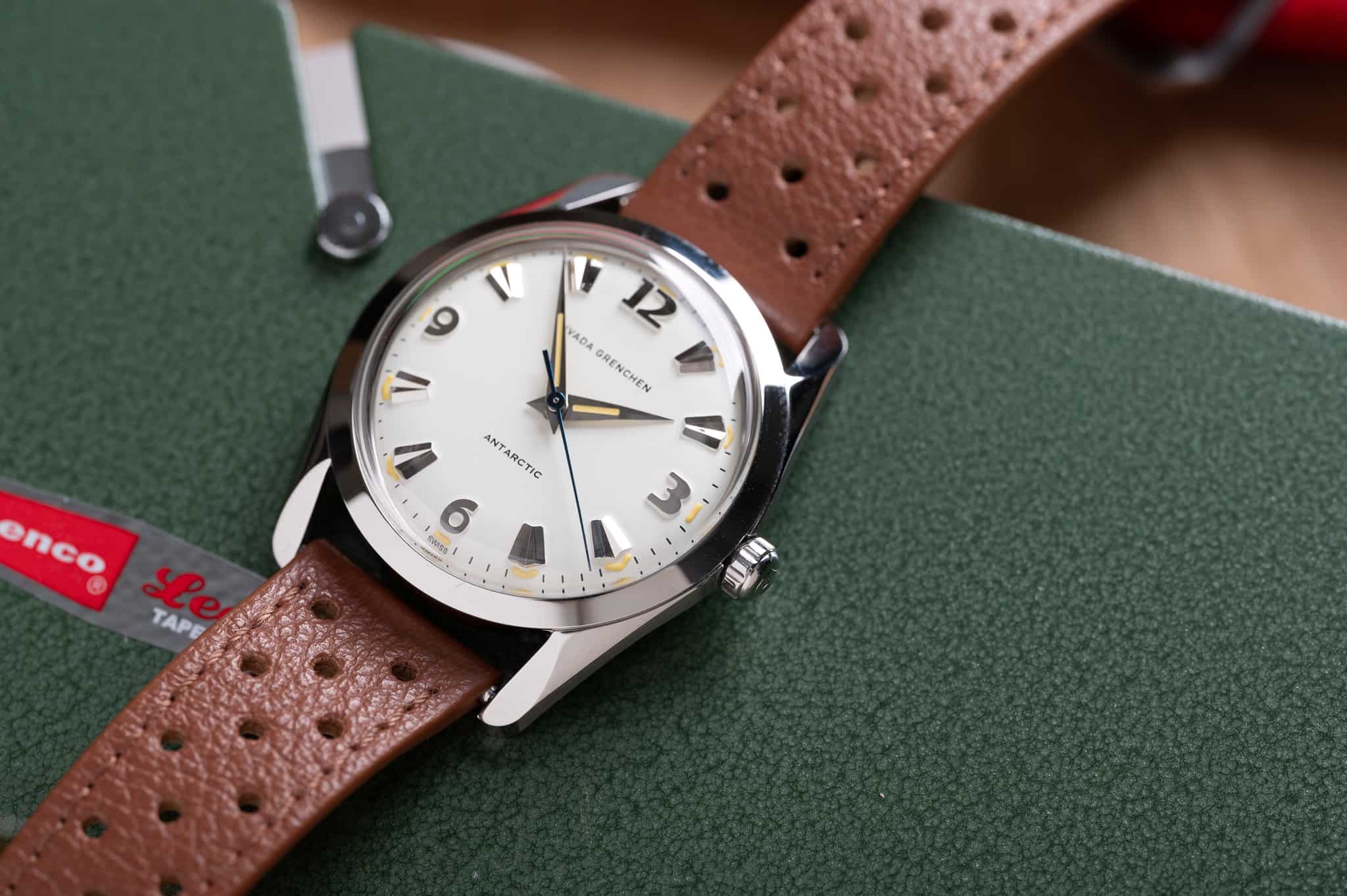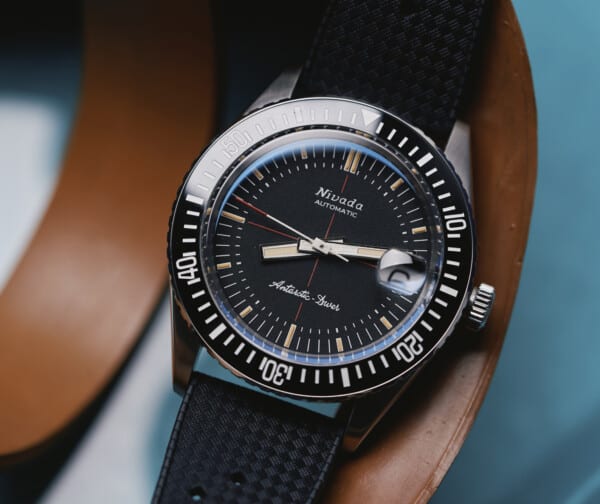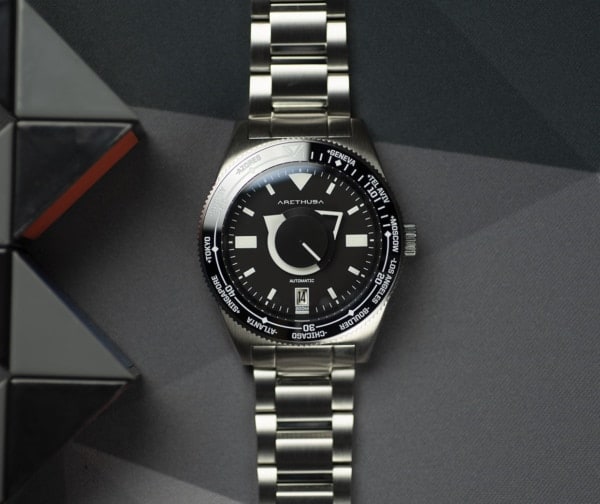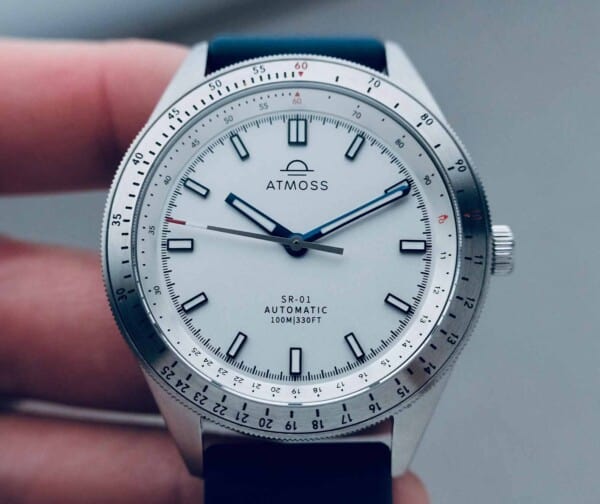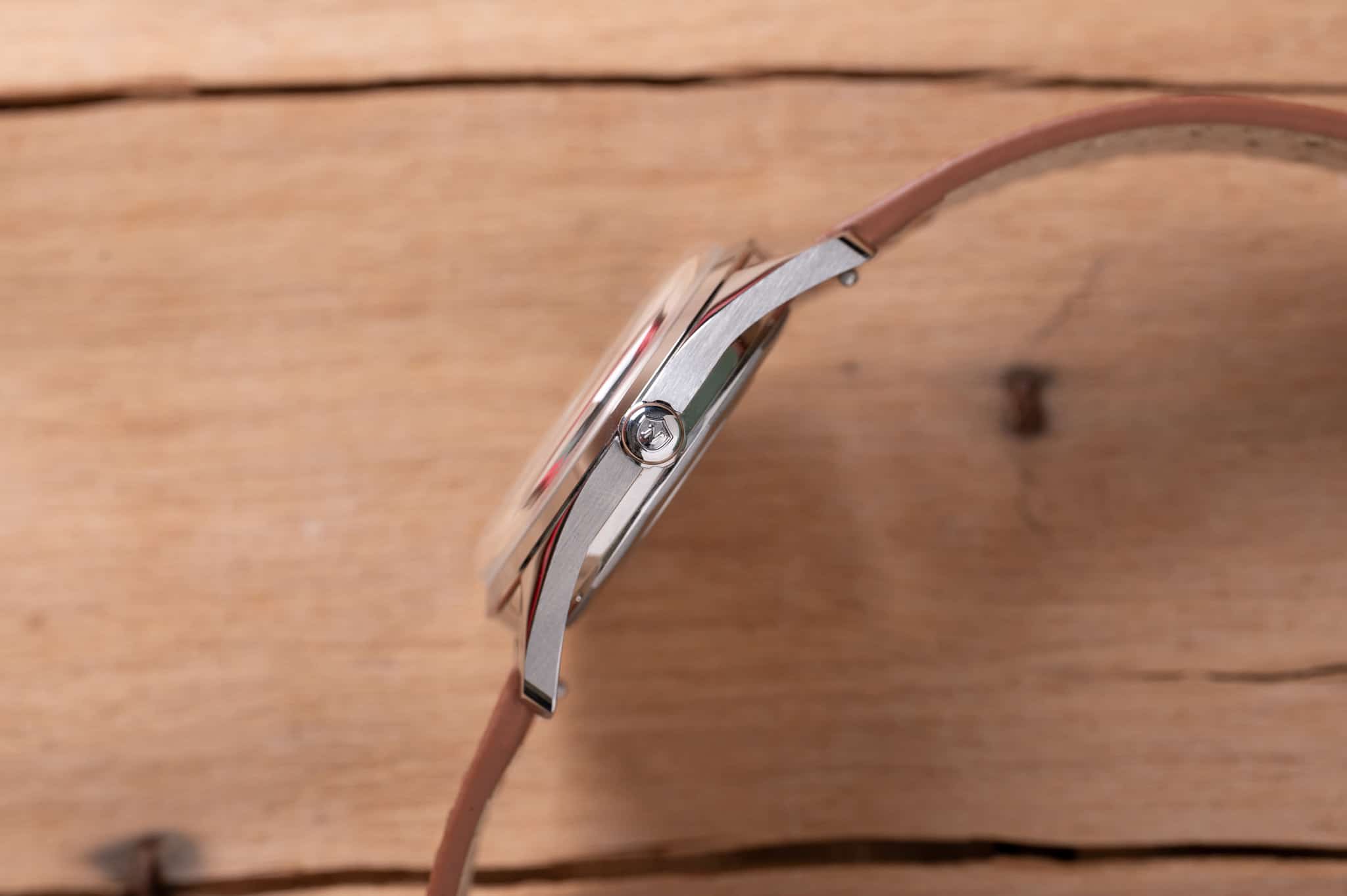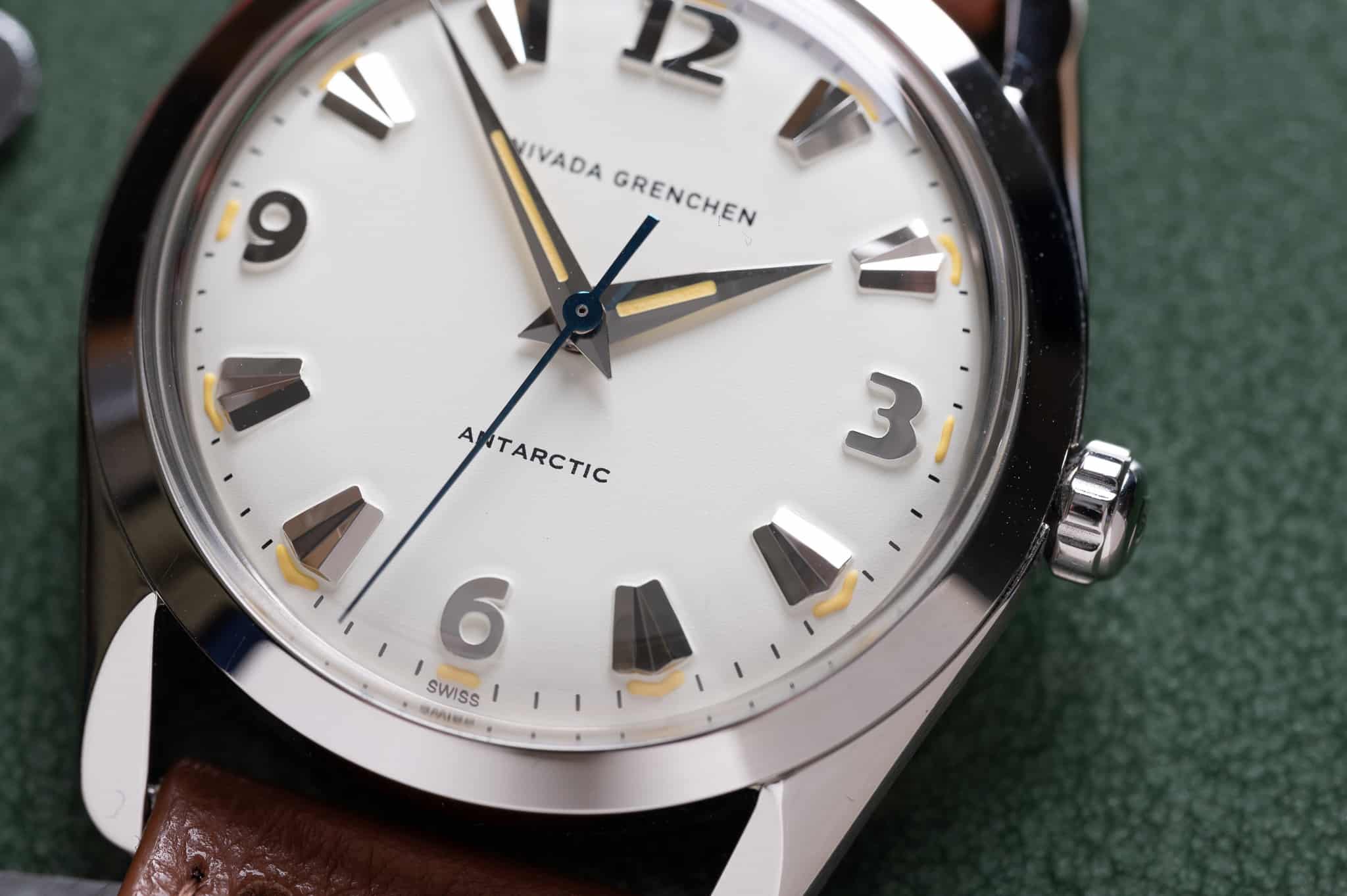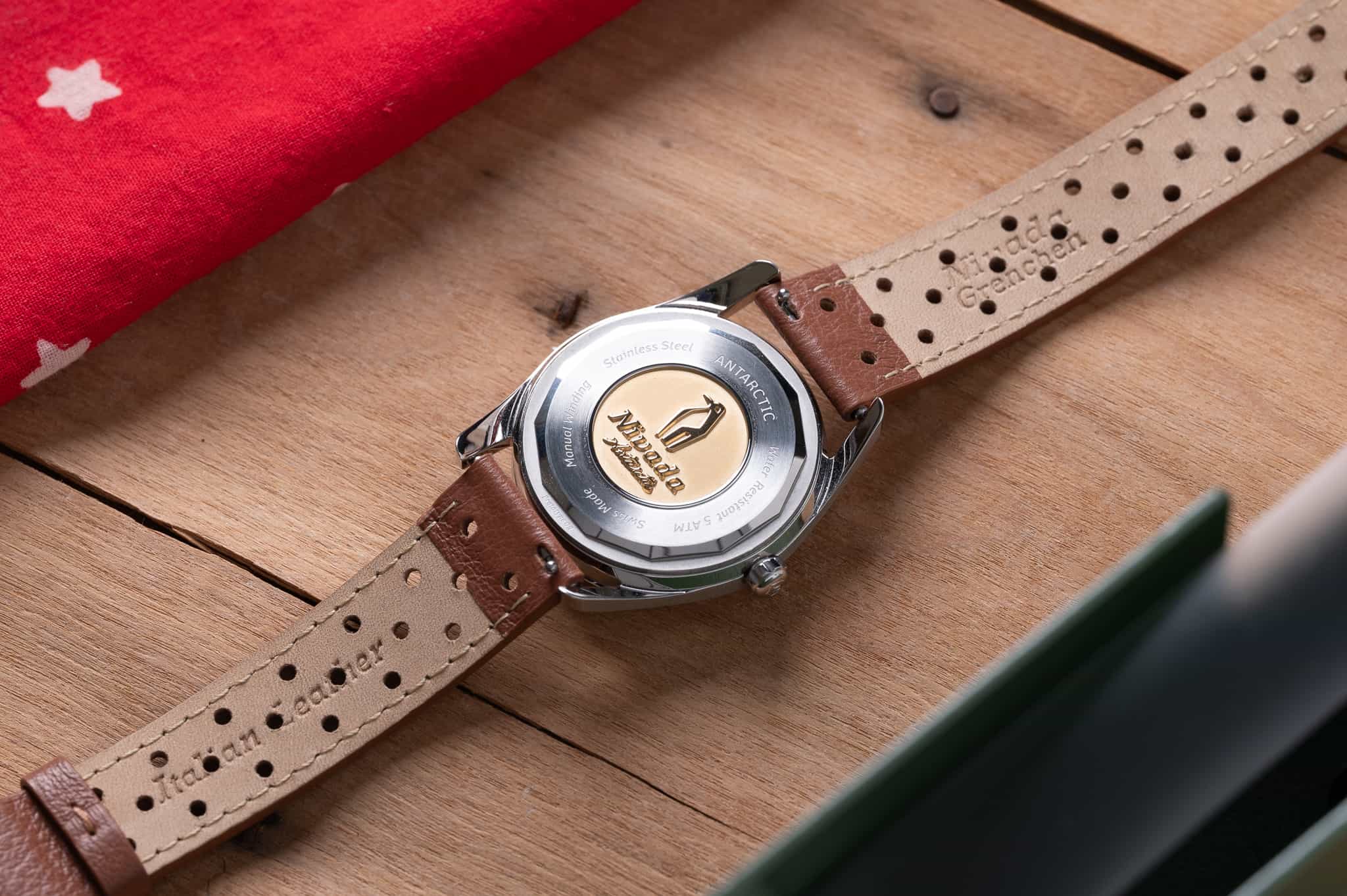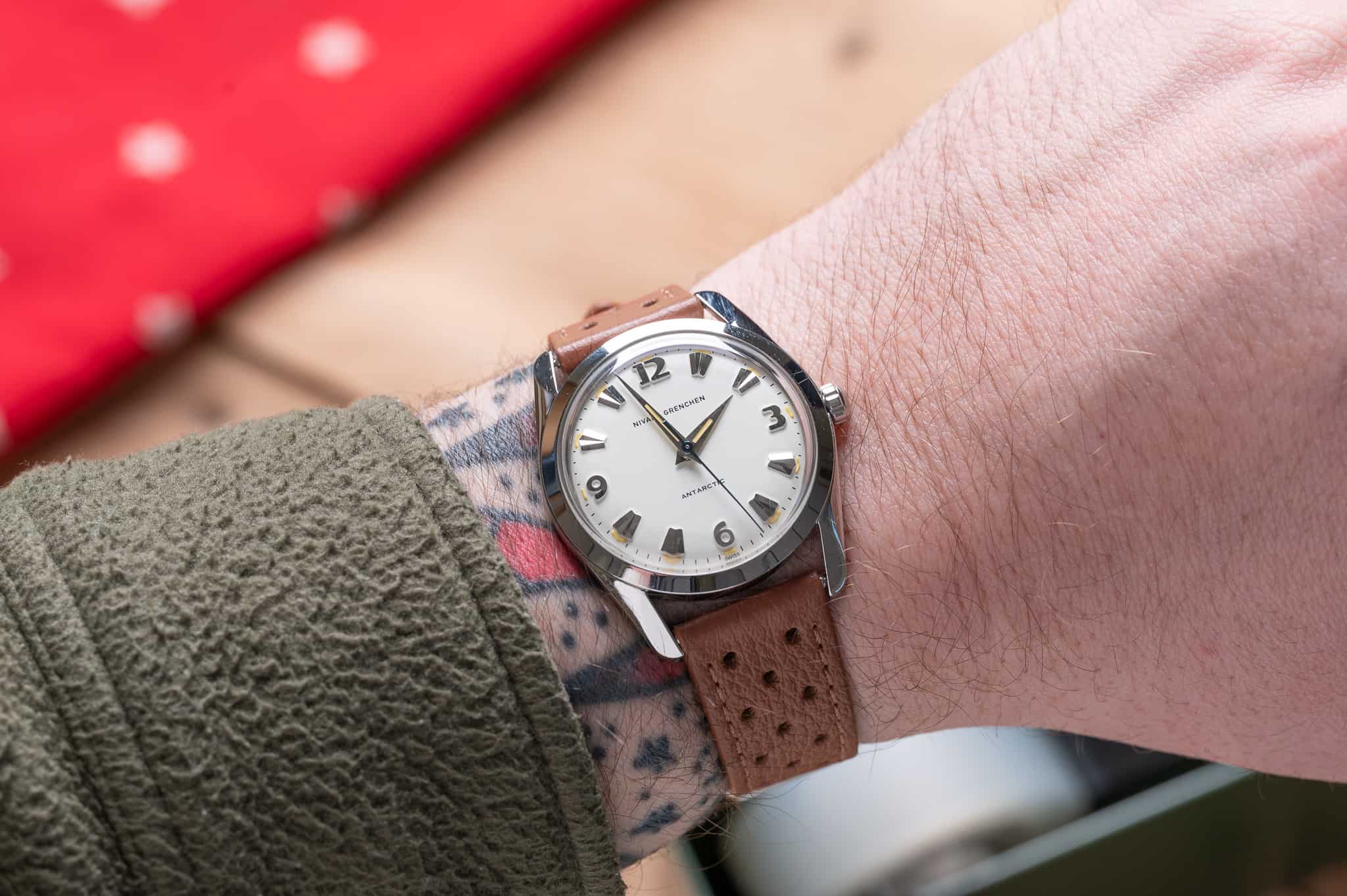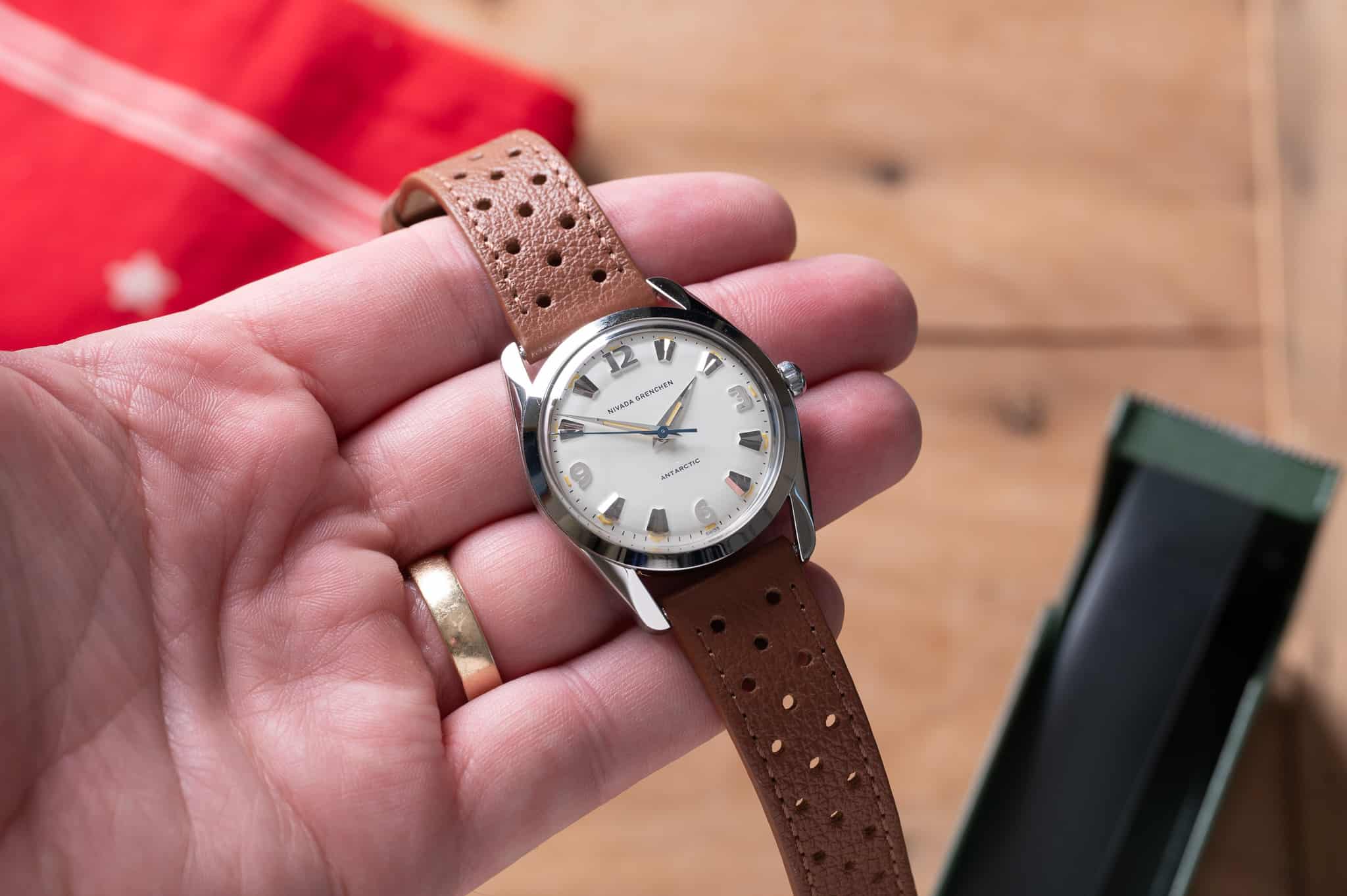Back in the 1950s when you were setting off for a distant land, a key piece of gear would be your trusty tool watch. Today, you’d reach for something like a Rolex Explorer II with its chunky steel case and bezel, bold handset and healthy application of lume. A Seiko SPB143 would make an excellent option on a tighter budget where other spendy gear takes priority. The point I’m trying to make is that the tool watch as we know it is today typically something big, chunky, robust, and borderline aggressive looking. The landscape for tool watches was completely different back in the 50s. If you were one of the American Navy’s Deep Freeze 1 task force and on your way to the South Pole back in 1955, the watch you would have been wearing is significantly different from the modern tool watch. That watch would have been the Nivada Grenchen Antarctic — a slim, art deco-inspired watch that was built tough, but not in the way you may think of it today. The Deep Freeze 1 task force’s mission was to establish a permanent base at the South Pole — one of the Earth’s most severe and ice-laden landscapes — and they needed to choose a timepiece that could withstand the conditions.
Hands-On: the Nivada Grenchen Antarctic 35MM
Today we’re looking at the faithful modern recreation of the Antarctic. The 35mm case stays true to the original’s dimensions while retaining the robust construction, including anti-shock and anti-magnetic properties. Let’s take a closer look and see if the new Antarctic lives up to its vintage counterpart, art deco styling and all.
Case
The fully-polished 316L stainless steel case has remarkably svelte dimensions. At 35mm wide by 41.9mm lug-to-lug, the Antarctic nails the dimensions of the width and lug-to-lug when compared to the original watch from the 50s. The thickness of the watch is actually less than the vintage version, with the modern measuring in at 10.1mm and the vintage version at 11.5mm. This is possible because of the movement choice (more on that later). By opting for a Landeron L21 hand winding movement, they were able to shave a full 1.4mm off the thickness of the case and crystal. It’s worth noting that the watch feels extremely thin when on the wrist. The actual metal of the case is a scant 7mm thin with the double domed sapphire crystal making up the remaining 3.1mm of the overall thickness. It’s really a treat to have on wrist and over the course of the review period, I found myself forgetting it was on more often than not.
As for the case itself, all of the top-facing surfaces (lugs and bezel) are highly polished, while the mid case features horizontal brushing. I typically prefer a mix of finishes visible on a watch case, but the small stature of the Antarctic doesn’t leave a ton of room for that, and I’m honestly here for it. One thing that does stand out (perhaps even more than the addition of some brushing?) Is the lug shape. There’s a flat surface on the top of the lugs towards where the strap attaches and it reflects light in a really interesting way. I really enjoyed this subtle detail that really enhanced how the polished case looked on wrist. The lugs also curve down towards your wrist, further enhancing how the watch wears.
Flip the watch over and you’ll find a really cool case back with a gold medallion embossed with a penguin that pays homage to the watch’s antarctic roots. It’s a nice callback to the geophysical survey medallions used to mark points of interest out in the wild.
Hands-On: the Nivada Grenchen Antarctic 35MM
On the right side of the case, you’ll find the push down crown. If there’s one part of this watch that bugs me, it’s the crown. The Antarctic is a hand winding watch with a 36 hour power reserve, which means you’ll spend a fair amount of time operating the crown. For something that has to be wound every day and a half, I’ve found it to be a bit too small and much too smooth to comfortably wind. The Landeron movement inside has a fair bit of resistance and I found myself struggling to get a full wind out of the watch. While the hand winding mechanical movement helps keep the watch nice and slim, it directly affects how you interact with the watch in a negative way. And this is just me minding my own business in a temperature controlled office, not out in the ice and wind with some thick gloves on. While the original was a little bit thicker, the automatic movement was crucial to the functionality of the watch, staying wound with the movement of your wrist while clutching onto a hiking pole or lowering yourself down a sheer ice wall.
Dial + Hands
One of my favorite parts of the watch is the art deco inspired dial that’s true to the original. Silver applied indices are split between decorative triangular shapes and fun and funky mid century numerals. A set of sharp dauphine hands points to the hours and minutes, while a slim blued steel seconds hand sweeps around the dial. Text is kept to a minimum, with “NIVADA GRENCHEN” in small all caps lettering just below 12 and “ANTARCTIC” in the same typeface balancing it out above six.
The dial is a nice neutral eggshell beige that isn’t quite as stark as if it had been white. The warmth continues with the plots of lume behind the indices and on the hour and minute hands. With a focus on legibility, the dial is easy to read at a glance. I don’t think the lume is going to be winning any “World’s Brightest” awards, it is there should you need it.
Movement
As mentioned above, the movement of choice for the Antarctic is the Landeron L21. If you’re thinking that the name Landeron sounds vaguely familiar, you’d be right. Started way back in 1873, the movement manufacturer was known for their breakthroughs in early chronograph movements in the 1920s and 30s. A bit later in the 1960s, the brand produced the first Swiss electronic watch movement which featured a battery powered balance wheel rather than a mainspring. The brand was ultimately claimed by the Quartz Crisis, and shuddered operations in the early 1980s. The name sat dormant until 2018, when Depa Swiss Movements Company started making ETA clones based on the recent reduced ability to acquire the movements by brands outside of the Swatch Group.
The L21 inside of the Antarctic is an extremely thin hand winding movement that beats at 28,800bph with a 36 hour power reserve. There are 17 jewels throughout the movement as well. On paper, the movement is technically similar to the ETA 2804 and Sellita SW215. I’m torn on the movement choice here. On one hand, it allows the watch to be super thin. On the other hand, it makes for a tool watch that you have to hand wind. While I’m no stranger to hand winding tool watches (proud Speedmaster owner, here), I do believe that the act of winding should be easy. A simple fix would be a more generously sized crown with some more texture to it.
Strap + Wearability
There are several choices to pick from when spec-ing out your Antarctic including a variety of leather and bracelet options. This review unit came with a supple brown leather racing strap with perforations throughout that keeps it light and airy on the wrist. I really like the buckle, as it has a premium feel and nice finishing. Subtle branding in the form of the Nivada “N” logo is a nice little touch. Stitching runs down the side of the straps in tonal brown, matching the leather.
Wearability is where the 35mm Antarctic shines. It’s light, sleek, slim, and ultra comfortable. I could see wearing this on your wrist with layers of clothing and gloves over it and never feeling encumbered by the watch. For me, this is where the tool watches of old really set themselves apart. When there’s lots of gear to be worn and carried, the last thing you want to worry about is your watch getting in the way. Something sleek like the Antarctic is a great option for both tool watch and casual wear.
Conclusion
There’s a lot to like about Nivada Gretchen’s re-release of one of their iconic watches from the back catalog. The small size, razor thin profile, and art deco styling stand out from the pack. It’s not without a few quirks, mainly being that I’d personally prefer an automatic movement that I’d have no problem trading a millimeter or two of thickness for. At the very least, a more robust crown with enhanced grip on a hand winder is a must.
I could see this piece being an excellent addition to the collection of those who appreciate a small watch with character. There aren’t a ton of similar options within the price range, making the Antarctic all that much more appealing. You can secure one for yourself starting at $850 on leather and going up from there for bracelet options. Nivada Grenchen









 Featured Videos
Featured Videos




